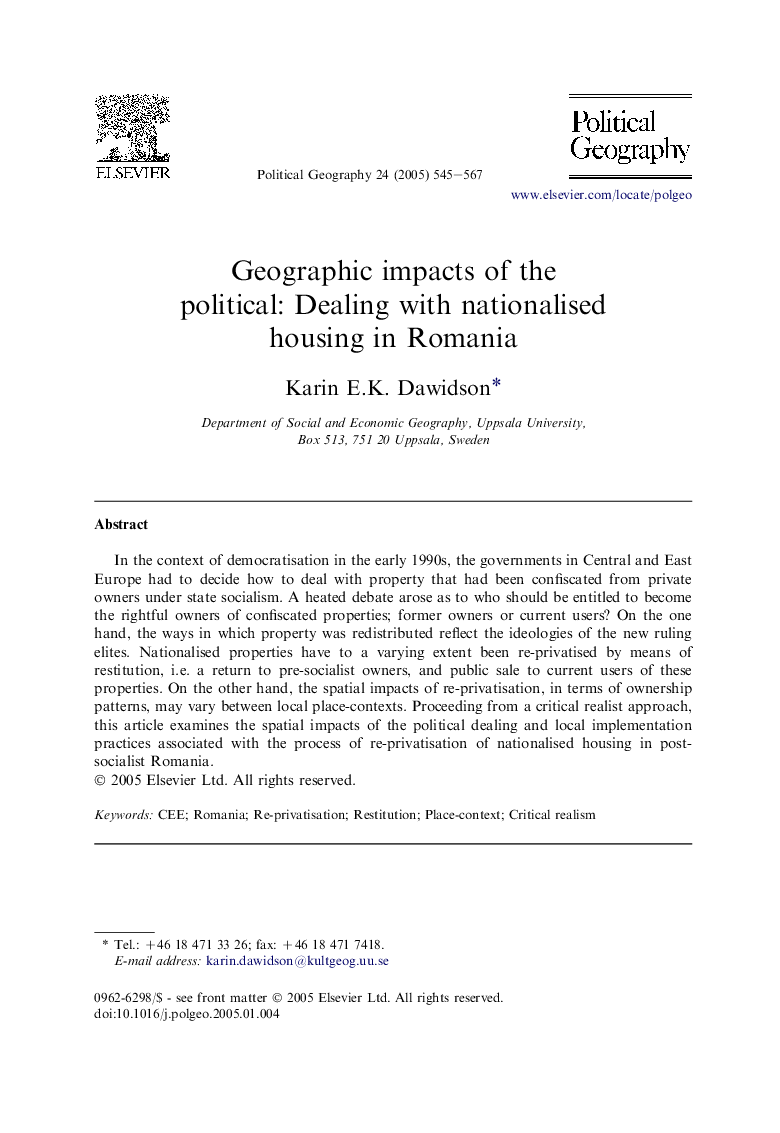| Article ID | Journal | Published Year | Pages | File Type |
|---|---|---|---|---|
| 10507856 | Political Geography | 2005 | 23 Pages |
Abstract
In the context of democratisation in the early 1990s, the governments in Central and East Europe had to decide how to deal with property that had been confiscated from private owners under state socialism. A heated debate arose as to who should be entitled to become the rightful owners of confiscated properties; former owners or current users? On the one hand, the ways in which property was redistributed reflect the ideologies of the new ruling elites. Nationalised properties have to a varying extent been re-privatised by means of restitution, i.e. a return to pre-socialist owners, and public sale to current users of these properties. On the other hand, the spatial impacts of re-privatisation, in terms of ownership patterns, may vary between local place-contexts. Proceeding from a critical realist approach, this article examines the spatial impacts of the political dealing and local implementation practices associated with the process of re-privatisation of nationalised housing in post-socialist Romania.
Related Topics
Social Sciences and Humanities
Arts and Humanities
History
Authors
Karin E.K. Dawidson,
